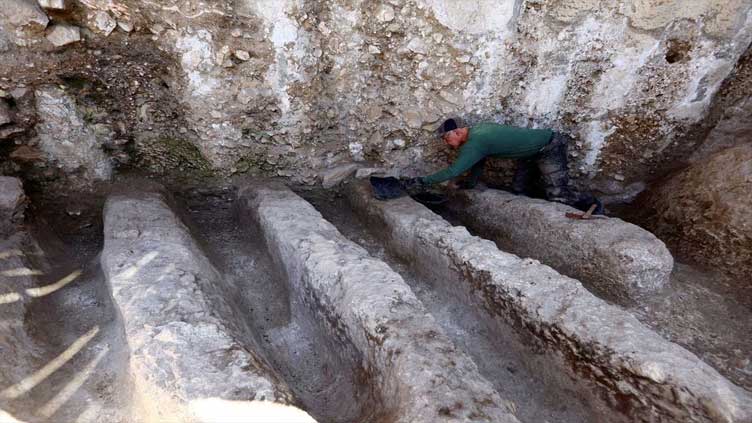Archaeologists find 'mystery' ducts near Jerusalem

World
Archaeologists find 'mystery' ducts near Jerusalem
JERUSALEM (Reuters) - An almost three millennia-old network of hewn-rock ducts unearthed in Jerusalem has baffled archaeologists, given the lack of comparable biblical finds, or obvious links to an ancient Jewish temple and palace that once stood nearby.
The knee-deep channels, dating back 2,800 years, are located outside Jerusalem's walled Old City. They stand in two clusters, which were discovered 10 metres (30 feet) apart.
Forensic testing of the channels found no blood, the Israel Antiquities Authority said - potentially ruling out a role in animal slaughter for banquets or religious sacrifice.
The ducts also do not appear to have engineered a flow in a single direction, or debouched into any basin, suggesting they were not used to sluice out sewage or rainfall, added the authority, whose research partner is Tel Aviv University.
"We looked at the installation and realised that we had stumbled on something unique," said archaeologist Yiftah Shalev in a joint statement, dubbing the discovery a "mystery".
The channels may have been used to prepare a commodity "connected to the economy of the temple or palace", said archaeologist Yuval Gadot in the statement.
"The production of linen, for example, requires soaking the flax for a long time to soften it. Another possibility is that the channels held dates that were left out to be heated by the sun to produce silan (date honey)," Gadot said.
The find, part of Israel's City of David National Park, will go on public display next week, the statement said.


